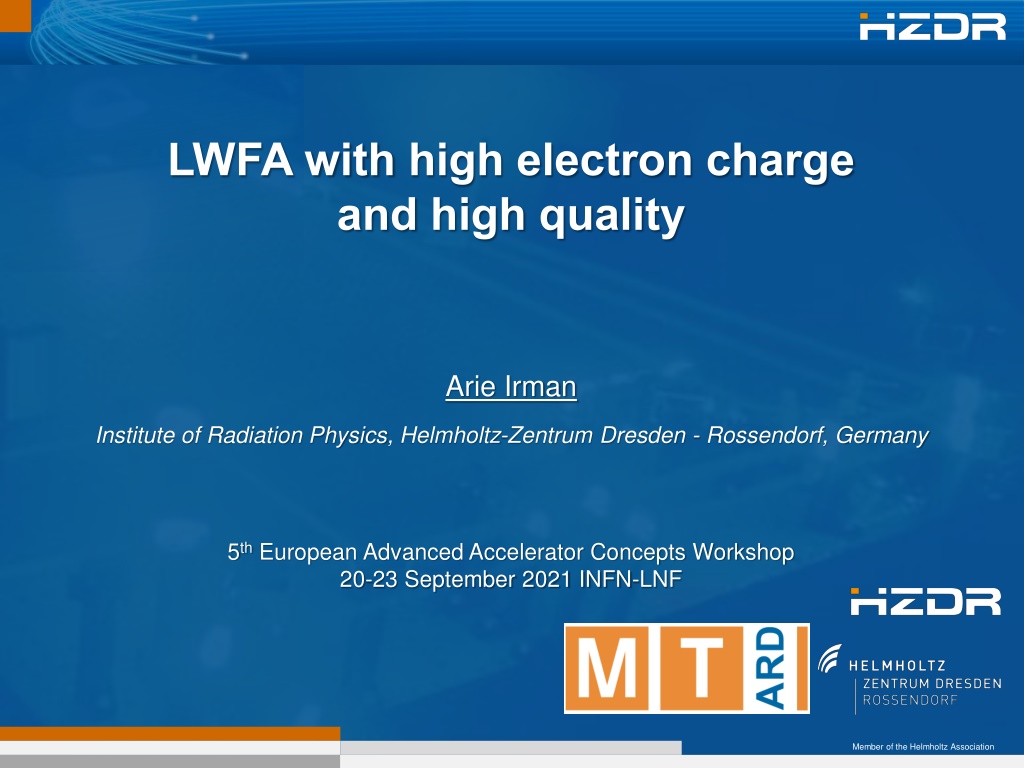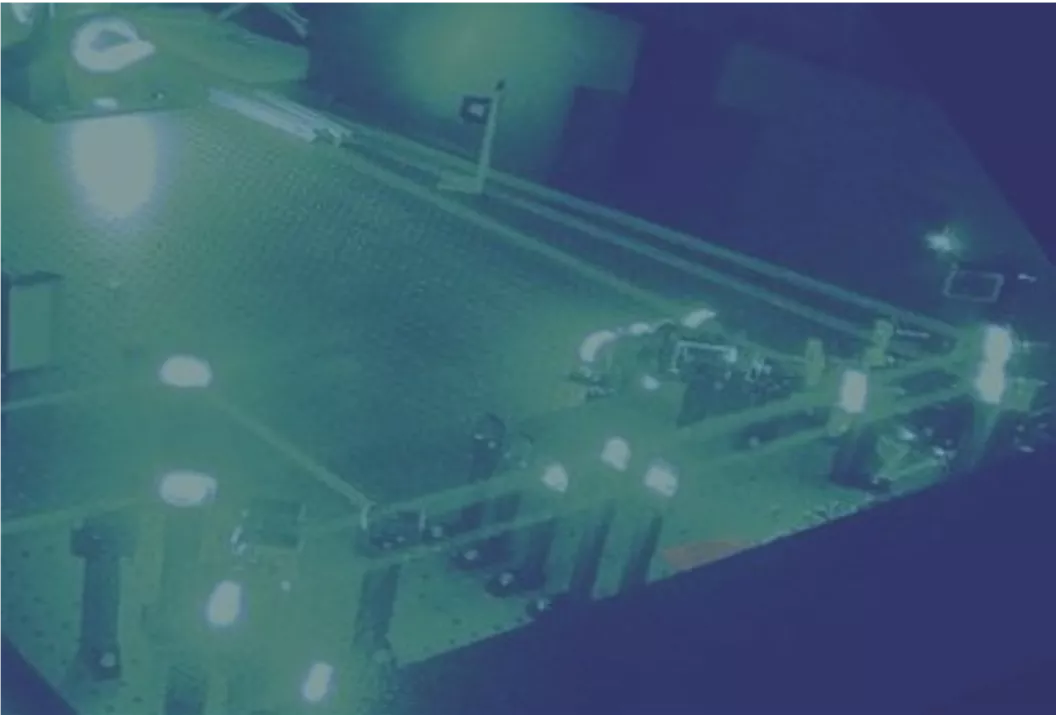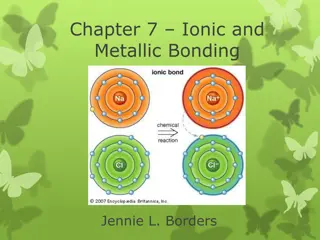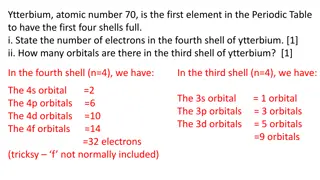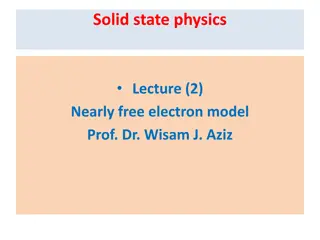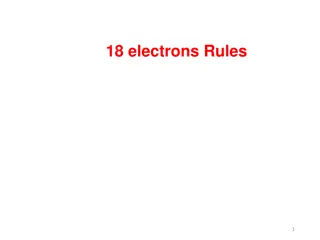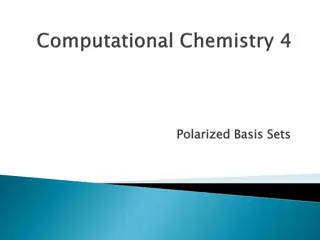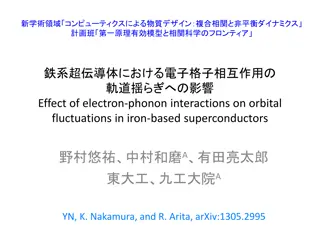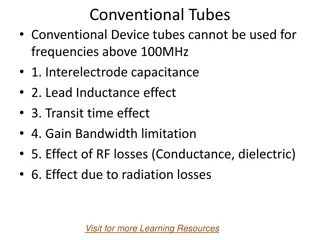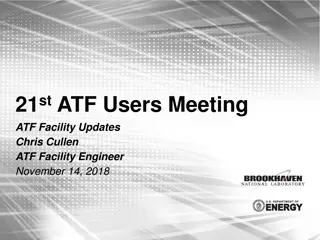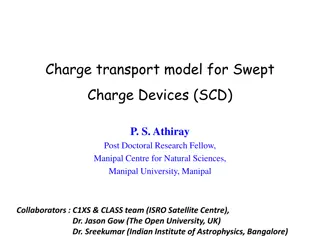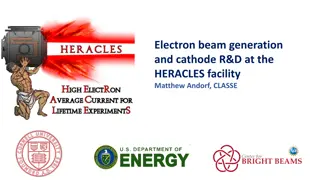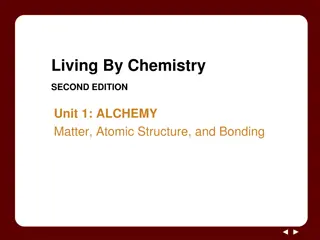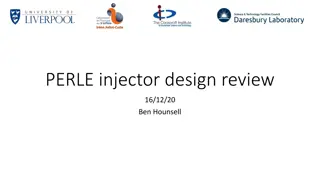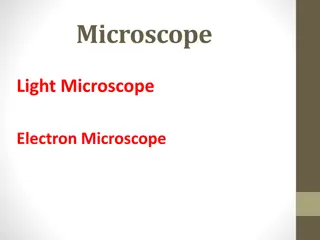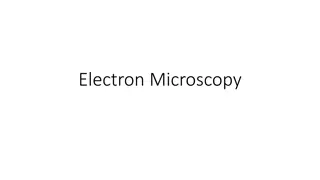High Electron Charge and Quality in LWFA Research
Explore the advancements in Laser Wakefield Acceleration (LWFA) research led by Dr. Arie Irman, focusing on high electron charge and quality for ultra-bright light sources in studying matter under extreme conditions. Motivations, operational regime, quest for high-quality electron beam, and challenges in beam optimization are discussed.
Download Presentation

Please find below an Image/Link to download the presentation.
The content on the website is provided AS IS for your information and personal use only. It may not be sold, licensed, or shared on other websites without obtaining consent from the author.If you encounter any issues during the download, it is possible that the publisher has removed the file from their server.
You are allowed to download the files provided on this website for personal or commercial use, subject to the condition that they are used lawfully. All files are the property of their respective owners.
The content on the website is provided AS IS for your information and personal use only. It may not be sold, licensed, or shared on other websites without obtaining consent from the author.
E N D
Presentation Transcript
LWFA with high electron charge and high quality Arie Irman Institute of Radiation Physics, Helmholtz-Zentrum Dresden - Rossendorf, Germany 5thEuropean Advanced Accelerator Concepts Workshop 20-23 September 2021 INFN-LNF Member of the Helmholtz Association
Motivations Ultra-bright light-sources for probing Matter under Extreme Conditions: - Compact x-ray to -sources: ICS, Betatron, FELs - Pump-probe geometry Novel acceleration concepts - Hybrid LWFA-driven PWFA See Moritz F rster talk Wed 17:30 Seite 2 Member of the Helmholtz Association Dr. Arie Irman a.irman@hzdr.de www.hzdr.de/fwt
Operational regime of todays LWFAs Most LWFAs operate in the bubble regime, supported by the advancements of laser technology Laser pulse Highly nonlinear regime (a0>2) (I > 8.5 x 1018Wcm-2) High accelerating gradients (> 100 GV/m) within microns size structure: compact accelerator Wakefield structure Strong linear focusing fields Can contain and accelerate large charges Accelerating field is linear and independent of transverse position Pukhov & Meyer-ter-Vehn, Appl. Phys. 74, (2002). Lu et al., PRSTAB 10, (2007), Esarey et al. Rev. Mod. Phys 57, 1229 (2009),. Downer et al., Rev. Mod. Phys 90, 035002 (2018). Seite 3 Member of the Helmholtz Association Dr. Arie Irman a.irman@hzdr.de www.hzdr.de/fwt
Quest for high quality electron beam multivariate coupled parameters Acc. Process Injection method Acceleration length Dephasing Depletion Extraction Transport Plasma Density profile Length Repetition rate Shot-to-shot and long term stability Laser beam Energy Pulse duration Spatial-mode at focus and its position Spatio-temporal coupling Repetition rate Shot-to-shot and long-term stability Electron beam parameters High energy & low energy spread High charge Bunch duration Emittance shot-to-shot and long-term stability Big challenge: Optimization all beam parameters at once Seite 4 Member of the Helmholtz Association Dr. Arie Irman a.irman@hzdr.de www.hzdr.de/fwt
High charge induced beam loading Self-fields of bunch superimpose the wakefield reshaping plasma accelerating structure Reduction of effective acceleration gradient Injection of an optimum charge with a specific shape flattening of the accelerating field, low energy spread Tzoufras,et al., PRL. 101,145002(2008) Seite 5 Member of the Helmholtz Association Dr. Arie Irman a.irman@hzdr.de www.hzdr.de/fwt
Recent experimental demonstration beam loading Couperus et al. Nat. Commun. 8, 487 (2017), Self-truncated Ionization Injection, gas jet G tzfried,et al., PRX. 10, 041015(2020), Shock- front Injection, gas jet Draco Kirchen,et al., PRL. 126, 174801(2021), Localized ionization injection, tailored density gas cell Angus Seite 6 Member of the Helmholtz Association Dr. Arie Irman a.irman@hzdr.de www.hzdr.de/fwt
Experiment @DRACO laser enable in-situ diagnostics as direct access to ultrafast microscopic plasma and beam dynamics + Electron spotsize mm-downstream and emittance (2D-CTR imaging NF+FF) + Electron bunch duration (CTR spectroscopy) Electron spectral-charge distribution (charge calibrated e-spectrometer) Laser diagnostics NF+FF @full power Electron source size at the plasma exit (Betatron xray spectroscopy) 15 m W wire Ta foil filtered Direct access to plasma cavity structure (few-cycle probe laser) Seite 7 Member of the Helmholtz Association Dr. Arie Irman a.irman@hzdr.de www.hzdr.de/fwt
Self-truncated ionisation injection In order to restrict energy spread from injection, a limited injection time is required In Self Truncated Ionisation Injection (STII) the laser driver and wakefield shape evolve during the interaction such that conditions for injection are fulfilled only in a limited region. Injection only when: Laser max energy is high enough for ionisation pseudo-potential difference allows trapping Zeng et al. Phys. Plasmas 21, 030701 (2014), Mirzaie et al. Sci. Rep. 5, 14659 (2015) Seite 8 Member of the Helmholtz Association Dr. Arie Irman a.irman@hzdr.de www.hzdr.de/fwt
Demonstration of charge tunability STII, Helium mixed wtith Nitrogen. Charge is increased by increasing nitrogen doping Keep laser and plasma parameters constant Injection volume phase- space constant A. Irman, PPCF 60, 044015(2018) Seite 9 Member of the Helmholtz Association Dr. Arie Irman a.irman@hzdr.de www.hzdr.de/fwt
Demonstration of charge density stability Control over laser beam parameters very crucial: Spatial-mode, Spatio- temporal coupling (pulse front curvature, radial group velocity) 80 TW, 2.5 mm gas jet, STII injection scheme, gas jet: Helium +1%Nitrogen Total charge (FWHM): 213 13 pC(6%) Analysis for 200 1 MeV energy slice: Charge density: 8.1 0.9 pC/MeV (11%), Divergence: 1.2 0.3 mrad Reaching both high shot-to-shot stability and high charge Seite 10 Member of the Helmholtz Association Dr. Arie Irman a.irman@hzdr.de www.hzdr.de/fwt
Scaling: charge vs drive laser power Couperus et al. Nat. Commun. 8, 487 (2017) G tzfried,et al., PRX. 10, 041015(2020) Trapping threshold 470 pC Relative energy spread measured ~15% for all data points With PW drive laser on target, we can comfortably enter 1 nC beam charge regime. A new optimization procedure for high- charge, energy and spread and divergence: - larger F# ? - lower density, longer accelerator ? - combined injection schemes ? 0.94 nC, E/E~18% Seite 11 Member of the Helmholtz Association Dr. Arie Irman a.irman@hzdr.de www.hzdr.de/fwt
DRACO laser system: dual-beam capabilities spectral gain control spectral phase control variable pulse picking synchronization 0-10Hz 150TW (6J) amp comp fs-osc 10Hz CPA 1 CPA 2 (1.5J) ps amp 0-1Hz PW (45J) amp comp XPW-modul 6J amp. 45J amp. Spatio-temporal laser metrology on target Laser parameters measured at full power shot: NF,FF, Energy, Spider, Sequoia, SRSI-ETE, Insight Seite 12 Member of the Helmholtz Association Dr. Arie Irman a.irman@hzdr.de www.hzdr.de/fwt
Summary Laser wakefield accelerators are attractive for future accelerators: high accelerating gradient (compactness), inherent short pulse duration (few fs) and high peak current (10s of kA). Coupling of driver, injector, accelerator to final beam parameters makes full optimization for better beam quality challenging. Tremendous progress in beam quality improvement: Optimal beam loading: Cancellation of the energy spread contribution from the acceleration process Injection schemes: decoupling injector from accelerator. Further reducing energy spread & beam divergence/emittance (at high injected charge) Increased reproducibility & stability: from acceleration to accelerator PW laser enables scaling toward nC-class electron beams. Seite 13 Member of the Helmholtz Association Dr. Arie Irman a.irman@hzdr.de www.hzdr.de/fwt
Thank you for your attention! Sachsen Zeitung Seite 14 Member of the Helmholtz Association Dr. Arie Irman a.irman@hzdr.de www.hzdr.de/fwt
Injection method: Energy spread & Charge E (FWHM, peaked distribution) E (FWHM, peaked distribution) [MeV] [MeV] 1000 Mean energy (peaked distribution) [MeV] total charge (peaked distribution) [pC] J. Osterhoff et al., PRL (2008), S.P.D. Mangles et al., Nat. (2004), J. Faure et al., Nat (2004), W.P. Leemans et al., Nat. Phys. (2006), S. Kneip et al. PRL (2009), H.T. Kim et al., PRL (2013) J. Faure et al., Nat. (2006), C. Rechatin et al., PRL (2009) K. Schmid et al., PRSTAB (2010), A. Buck et al., PRL (2013), K.K. Swanson et al., PRAB (2017), K. Khrennikov et al., PRL (2015), G tzfried et al., PRX 10, 041015(2020), A.J. Gonsalves et al., Nat. Phys. (2011), B.B. Pollock et al., PRL (2011), W.T. Wang et al., PRL (2016) C. McGuffey et al., PRL (2010), C.E. Clayton et al., PRL (2010), Y.F. Li et al., Phys. Plasmas (2017) M. Mirzaie et al., Sci. Rep. (2015), J.P. Couperus et al., Nat. Comm. (2017) A. Irman et al., Plasma Phys. Control. Fusion 60, 044015 (2018) Seite 15 Member of the Helmholtz Association Dr. Arie Irman a.irman@hzdr.de www.hzdr.de/fwt
